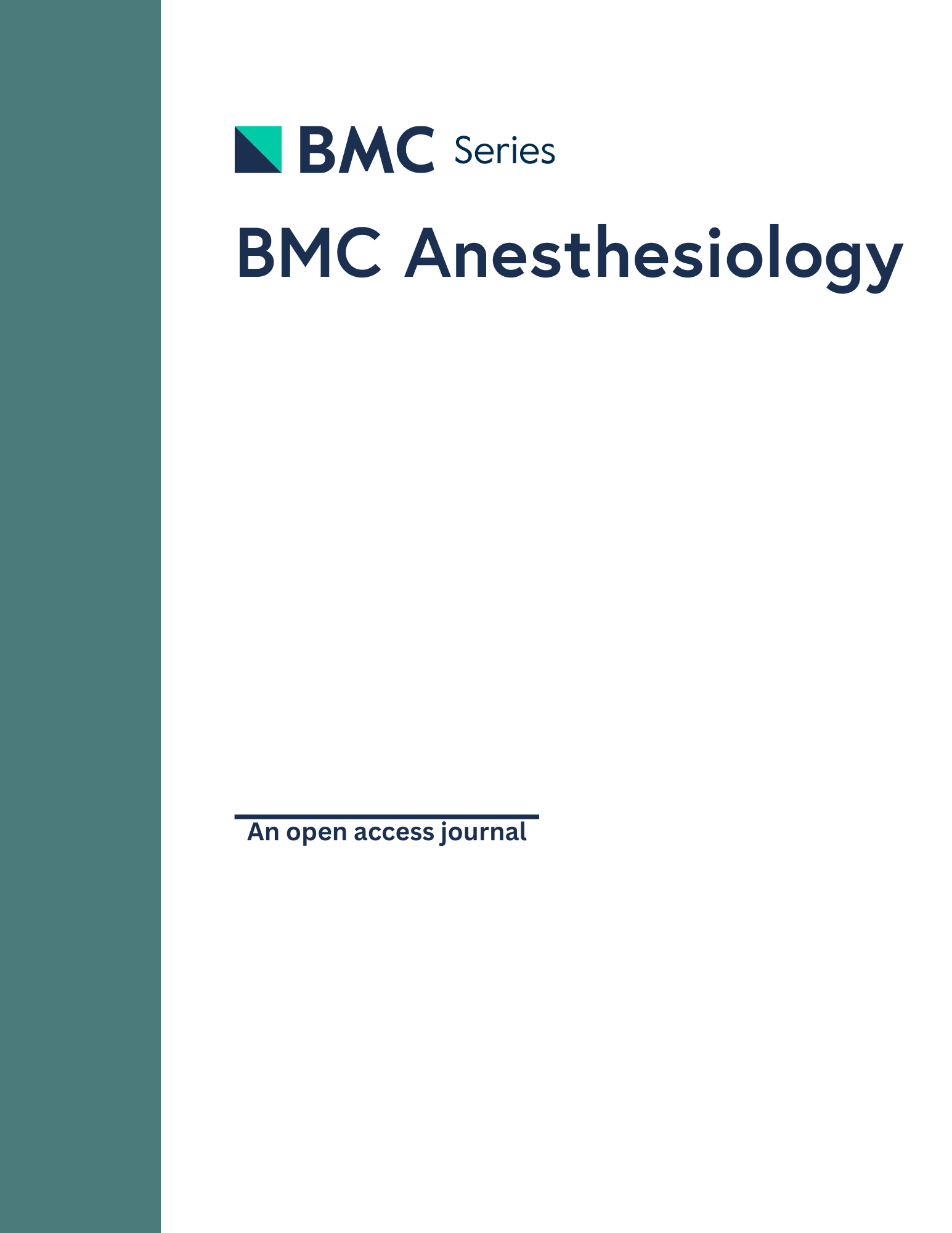
Spinal anesthesia vs psoas compartment-sciatic nerve block for hip replacement in elderly

Spinal anesthesia vs psoas compartment-sciatic nerve block for hip replacement in elderly
Continuous spinal anaesthesia versus ultrasound-guided combined psoas compartment-sciatic nerve block for hip replacement surgery in elderly high-risk patients: a prospective randomised study
BMC Anesthesiol. 2014 Nov 5;14:99Synopsis
70 elderly patients with ASA physical status III or IV and scheduled for elective hip replacement were included in this trial. The purpose of this study was to compare continuous spinal anesthesia with combined psoas compartment-sciatic nerve block with respect to hemodynamic effects in elderly high-risk patients. The results from this trial indicated comparable results, with continuous spinal anesthesia taking significantly shorter time to perform than combined psoas compartment-sciatic nerve block.
Was the allocation sequence adequately generated?
Was allocation adequately concealed?
Blinding Treatment Providers: Was knowledge of the allocated interventions adequately prevented?
Blinding Outcome Assessors: Was knowledge of the allocated interventions adequately prevented?
Blinding Patients: Was knowledge of the allocated interventions adequately prevented?
Was loss to follow-up (missing outcome data) infrequent?
Are reports of the study free of suggestion of selective outcome reporting?
Were outcomes objective, patient-important and assessed in a manner to limit bias (ie. duplicate assessors, Independent assessors)?
Was the sample size sufficiently large to assure a balance of prognosis and sufficiently large number of outcome events?
Was investigator expertise/experience with both treatment and control techniques likely the same (ie.were criteria for surgeon participation/expertise provided)?
Yes = 1
Uncertain = 0.5
Not Relevant = 0
No = 0
The Reporting Criteria Assessment evaluates the transparency with which authors report the methodological and trial characteristics of the trial within the publication. The assessment is divided into five categories which are presented below.
2/4
Randomization
4/4
Outcome Measurements
4/4
Inclusion / Exclusion
4/4
Therapy Description
4/4
Statistics
Detsky AS, Naylor CD, O'Rourke K, McGeer AJ, L'Abbé KA. J Clin Epidemiol. 1992;45:255-65
The Fragility Index is a tool that aids in the interpretation of significant findings, providing a measure of strength for a result. The Fragility Index represents the number of consecutive events that need to be added to a dichotomous outcome to make the finding no longer significant. A small number represents a weaker finding and a large number represents a stronger finding.
Why was this study needed now?
Hip replacements are common in the elderly population. There has been increased interest towards using regional anaesthesia in this patient population, avoiding certain comorbidity-related complications with general anaesthesia that are especially seen in older patients. Two methods of regional anaesthesia that have piqued interest among surgeons are continuous spinal anaesthesia (CSA) and combined psoas compartment-sciatic nerve block (PCSNB). While neither are free of potential complications, its has been suggested that PCSNB may be more advantageous in elderly patients when considering hemodynamic effects. This trial aimed to compare the effectiveness of each anesthesia in elderly patients undergoing hip replacement surgery.
What was the principal research question?
In high-risk, elderly patients undergoing hip replacement, how do the hemodynamic effects and anesthesia quality of continuous spinal anesthesia compare with combined psoas compartment-sciatic nerve block?
What were the important findings?
- Mean arterial blood pressure was significantly higher in the PCSNB group than the CSA group at the beginning of surgery (p=0.038), at the 5th (p=0.029), 10th (p=0.012), and 20th (p=0.009) minutes of surgery.
- 13 patients in the CSA group and 4 patients in the PCSNB group experienced arterial hypotension requiring epinephrine treatment (p=0.012).
- The duration of the block procedure was significantly shorter in the CSA group compared with the PCSNB group (18.51 +/- 1.82 min vs. 35.53 +/- 5.51 min; p<0.001).
- Patients in the CSA group loss significantly less intraoperative blood than patients in the PCSNB group (283.14 +/- 68.66 mL vs. 329.57 +/- 53.66 mL; p=0.02).
- There was a significantly lesser amount of patients in the CSA group that required postoperative rescue analgesic than in the PCSNB group (11 vs. 30; p=0.0001).
What should I remember most?
Psoas compartment-sciatic nerve block took longer time to perform, resulted in more intraoperative blood loss, and required more postoperative analgesia, but maintained mean arterial pressure in the first 20 minutes of surgery when compared with continuous spinal anesthesia. Fewer patients in the psoas compartment-sciatic nerve block group experienced arterial hypertension requiring ephedrine treatment compared to the continuous spinal anesthesia group.
How will this affect the care of my patients?
This study is one of the first investigations into the comparative effect on hemodynamic effects between a combined psoas compartment-sciatic nerve block and continuous spinal anaesthesia in high-risk elderly patients undergoing hip replacement. Based on the findings of this trial, a combined psoas compartment-sciatic nerve block may have less of an effect on hemodynamics than continuous spinal anaesthesia, though appears more technically demanding as evidenced by the increased length of administration. Important to note is the small number of patients included within this study, necessitating the need for further evaluation of PCSNB and CSA in a larger cohort of patients.
Learn about our AI Driven
High Impact Search Feature
Our AI driven High Impact metric calculates the impact an article will have by considering both the publishing journal and the content of the article itself. Built using the latest advances in natural language processing, OE High Impact predicts an article’s future number of citations better than impact factor alone.
Continue



 LOGIN
LOGIN

Join the Conversation
Please Login or Join to leave comments.